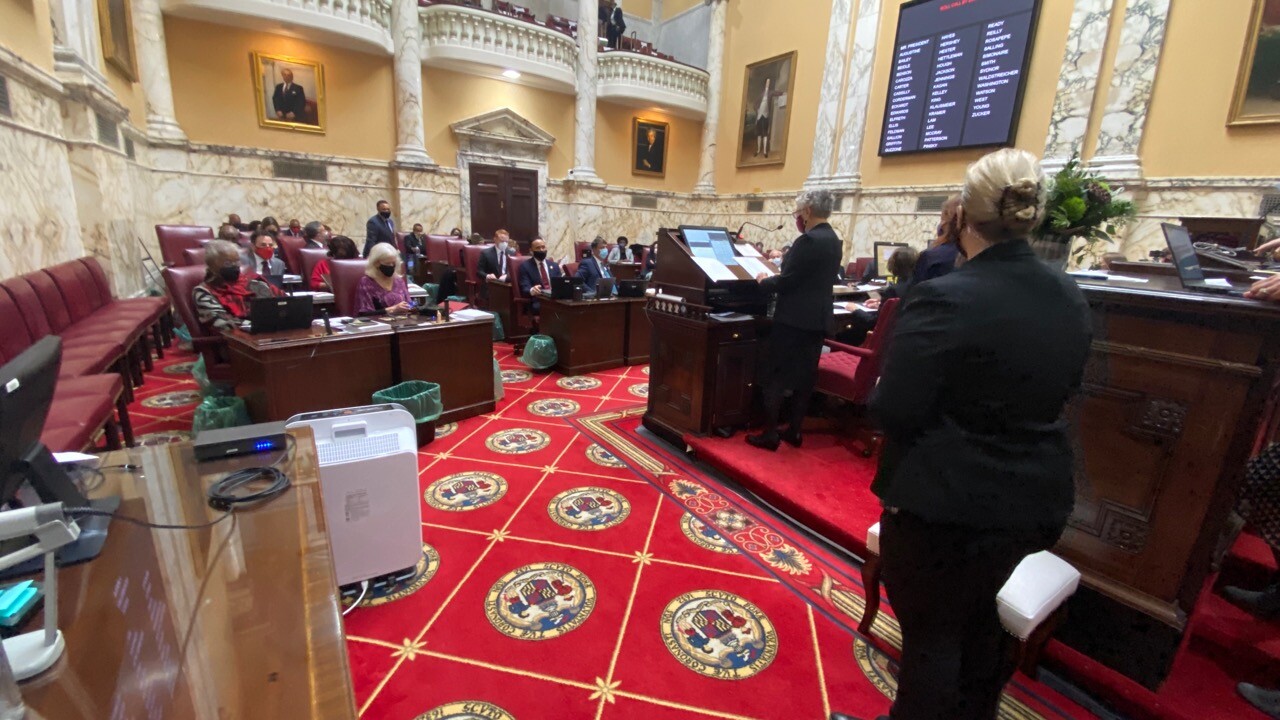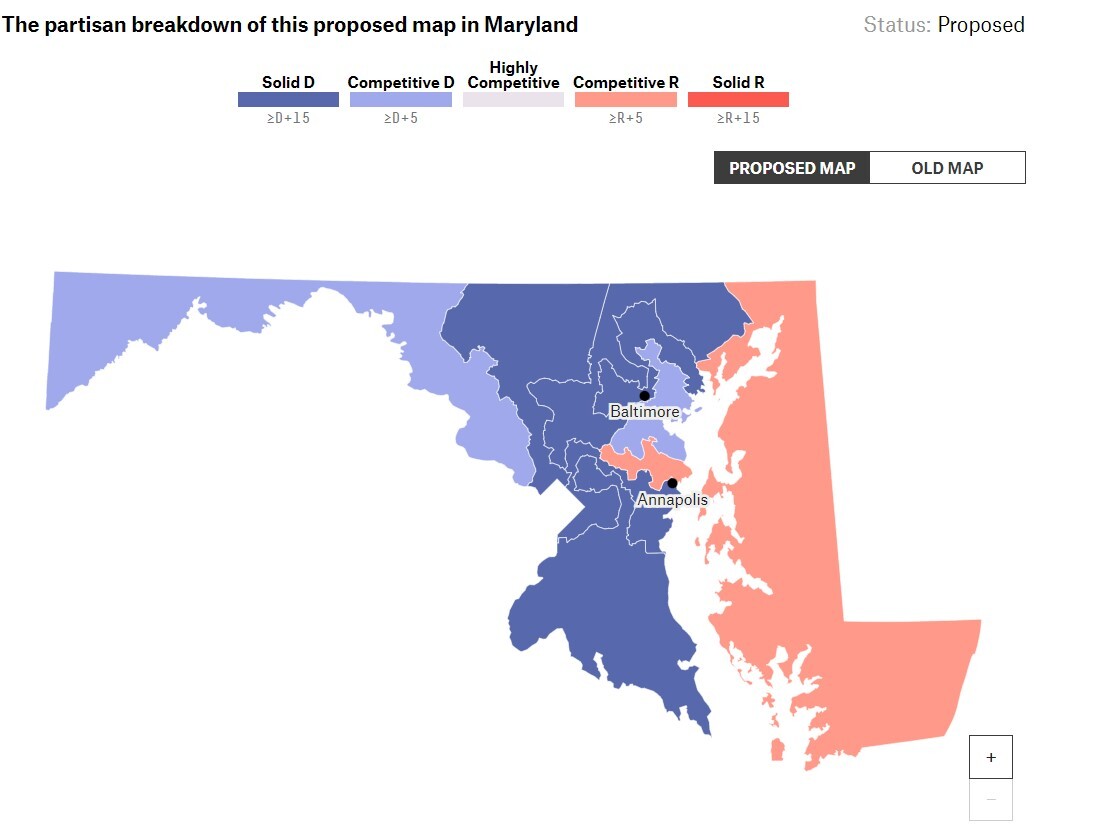ANNAPOLIS, Md. — Debate over the redistricting maps moved across the halls of the State Capitol, from the House of Delegates to the Senate chamber Wednesday.
The heated debate over the Legislative Redistricting Advisory Committee Congressional map - also referred to as the LRAC map.
Wednesday evening, just before 5pm, the Senate voted, 32-15 to pass the LRAC map. The map now heads to the Governor's desk for his signature.

"It is my opinion that this map is designed to make it 8-0 [in favor of Democrats]," said Sen. Edward Reilly (R) on the Senate floor Wednesday morning.
Just as in the House of Delegates yesterday, there was an attempt to amend the bill that would enact the LRAC map, and replace it with the map that was designed by the Maryland Citizens Redistricting Commission.
"It's never easy giving up power, giving up that authority," says Senator Jason Gallion (R).
We spoke with senior elections analyst at FiveThirtyEight, Nathaniel Rakich, about the proposed map.
"The speculation going into this year, with Democrats again in control of the redistricting process, was whether they would kind of go for the jugular and go for an 8-0 Democratic Congressional delegation," he says.
But, that's not what FiveThirtyEight's analysis shows for this map - despite what Sen. Reilly said on the Senate floor.
"They've kind of chosen a middle path here," says Rakich. "This map, I would say, is more aggressive than the current map in that it does make Andy Harris's seat (which is the one Republican seat in Maryland) more competitive, but it doesn't.. doom him."

When asked if he thought the LRAC map was gerrymandered, Rakich said that gerrymandering isn't a binary status.
"FiveThirtyEight have a few different kind of statistical measures to test how fair or how gerrymandered a map might be," says Rakich. "One of those.. measures the efficiency gap."
"Maryland's map does score pretty poorly," he adds. "It has an efficiency gap of D+16 percentage points."
The efficiency gap metric is based on a formula developed by a pair of academic researchers in 2014 whose goal was to set a quantifiable, legal standard for what constitutes gerrymandering.9 The efficiency gap is the difference between the two parties’ “wasted votes” divided by the total number of voters, where “wasted votes” are defined as all votes cast for the losing party in a district as well as votes for the winning party in excess of a majority. To take a simple example, imagine a state with three districts — two of which Republicans win 60 votes to 40 votes, and one of which Democrats win 90 votes to 10 votes. Democrats have 40 wasted votes in each of the first two districts and 39 in the third (because they won 39 more votes than 51, the district’s majority threshold), for a total of 119. Meanwhile, Republicans have nine wasted votes in each of the first two districts and 10 in the third district, for a total of 28. The map’s efficiency gap is therefore 91 (119 minus 28) divided by 300 (the total number of votes in all three districts), or 30.3 percentage points in favor of Republicans.10
Republican Senator Bryan Simonaire summed up his view on the chamber floor today.
"I don't find it surprising that the winning side thinks these maps are fair," he told his colleagues.

One thing Republicans and Democrats in Annapolis did agree on, redistricting is hard, but important.
"It's a tough job," says Sen. Reilly
Democratic Senator Nancy King says, "There is no perfect way to make a map."
Senator Robert Cassilly (R) emphasized the gravity of the process, "We're here for the foundation of a free government."
"This is important for democracy," Senate president Bill Ferguson said as they concluded the legislative work early Wednesday afternoon.


